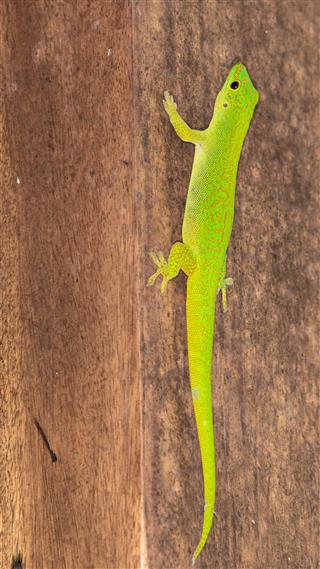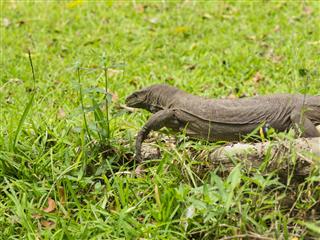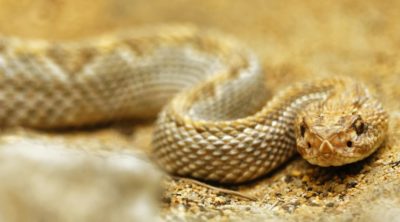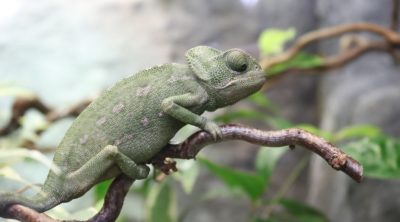
Out of a wide variety of lizard species, choosing the perfect one as your pet might become a tedious job. This article gives you some quick facts on lizards as pets.
Lizards are found across all continents except Antarctica, and that is the reason they can adapt to different environmental conditions. As said earlier, they have numerous types of species ranging from the tiny Dwarf Gecko to the giant Komodo dragon. Important factors such as size, temperament of the reptile, and the amount of care it requires, must be taken into consideration before you decide to raise a lizard as a pet. Although not all these reptiles make good pets, there are some species which do not mind living with humans.
Lizard Species Suitable to be Raised as Pets
For obvious reasons, it is advisable to go for those species of lizards which are easy to handle and care. The following lists some which are popular as pets with most hobbyists.
Bearded Dragon Lizards

The bearded dragon has been a favorite choice among most hobbyists.
This moderately sized small lizard has the right temperament which is required in any pet; docile, social and easy to tame and handle. You can get any type of glass or plastic terrarium to home your bearded dragon pet lizard. However, you might come across one challenge while raising this native reptile of Australia when it comes to its nutritional and environmental requirements. As a desert dweller, the reptile requires UVA and UVB radiation. You can get mercury vapor bulbs for the purpose. These bulbs also act as basking lights which would help fulfill the temperature requirement of the animal. The lizard is an omnivore; it feeds on certain types of vegetables and insects. It is important to note that, the diet for these lizards must consist of 80% meat sources and 20% plants. Meat food sources for your bearded dragon may include pinky mice (for adults), and insects such as crickets, mealworms, wax worms (in small quantity), king worms, earthworms and cockroaches. Vegetables include escarole, kale, collards, bok choy, swiss chard, parsley, clover, and alfalfa pellets are recommended. Broccoli, okra, peas, green beans, squash, and zucchini can also be fed. The lizard does not mind eating fruits like figs, kiwi, papaya, melon, apples, grapes, dates, etc.
Monitor Lizards

The savannah monitor and Acklin’s monitor are commonly kept as pets by experienced lizard hobbyists. These two species are small, have humble requirements thus, low cost, and usually exhibit friendly behavior. Out of these species, the savannah monitor is domesticated easily. Their new home must comprise plenty of hiding places, appropriate flooring material (paper toweling or newspaper is recommended as such things can be easily removed for cleaning), full-spectrum lighting, and enough space. These reptiles love to soak in water. To meet this need, provide a large water dish in the terrarium. Garden bugs, pinky mice, adult mice, rats and eggs are the common food sources of these reptiles. They also require minerals and vitamins supplements, and calcium supplements are a must for the juveniles.
Blue Belly Lizards

If you are looking for lizards which are low-maintenance pets, then blue belly lizards fit the bill. Also known as western fence lizards or swifts, these lizards are active, and fun to watch, provided they are given all the basic ‘pleasures’ they need; food and care. Make light arrangements for your blue belly so that they can enjoy the warmth in 80 – 95 degrees during day time and 75 – 80 degrees at night. A 60-watt UVB light is recommended. Needless to say, put a shallow water dish in the tank. You can feed blue belly lizards, ants, spiders, crickets, waxworms and other harmless bugs. For added nutrition, simply dust the meal with calcium supplement powder.
Leopard Geckos

For novices, this lizard species is the most recommended. The most important factor that qualify this reptile as a good pet is its size; 8 – 10 inches in length. You can choose to keep more than one gecko in a tank, but ensure that the group has one male unless you are ready for raising offspring. For substrate, strike out sand, and go for paper or reptile carpet. Slate tiles are recommended by most experts. An under tank heater is necessary, and if you happen to live in a colder climate, then a heat lamp may also be required. Given the nocturnal nature of the reptile, you do not have to spend on UV lighting. Ensure that your pet has access to a clean, shallow dish of water at all times. Do not forget to re-fill it about every other day, and it is preferable to keep it in a place opposite to that of the light source. Insects are the lizard’s delicacies. Treat it with crickets, waxworms, meal worms, and roaches. Juveniles need to be fed every day, and provide meal worms in moderation. If your pet is an adult, then, you may also offer it pinkie mice occasionally. It is beneficial for the lizard if its meal is coated with a calcium/D3 supplement.
Green Anoles

Another popular lizard species in pet trade is the green anole; inexpensive and easy to care for. Also known as Carolina anole, it is one of the most suitable reptile pets for kids. Experts recommend providing two hiding places. One should be on the hot side and the other on the cold. This helps the lizard to self regulate its body temperature. As the reptile requires exposure to UVB radiation and heat, a mercury vapor bulb is good enough for the purpose. Your green anole also prefers a humid environment. So misting the cage once a day is advised. In the wild, the lizard mostly feeds on crickets and grasshoppers. In captivity, mealworms, grubs, and maggots make up for the menu. You can also go for fruit flies, and small roaches. Ensure that the size of the meal is half the size of the reptile’s mouth. Coat the insects with vitamin and calcium supplement. This is more important for juveniles. Unlike the lizards mentioned above, the green anole does not drink from a water dish. Simply mist one side of the tank frequently, and the lizard would learn to lick the water.
Lizards as Pets for Children
When it comes to kids, not all lizards can make good pets. Of all, leopard geckos, green anoles and bearded dragons are considered to be the best for keeping as pets for kids. Proper supervision is required by parents in order to teach their children about the various requirements and needs of these reptiles. Do not commit the mistake of bringing home just any small lizard for your kids without having proper information about its type and requirement. You may never know how large the animal might get, and require a living area that you may not be able to provide.
Basic Facts on Lizard
Habitat
Lizards dwell in various places from deserts, temperate and rain forests, prairies, marshes and streams to subterranean burrows, and rocky outcrops. Most lizard species are active during warm, daylight summer hours. When the mercury level is high, these reptiles remain inside burrows or underneath rocks. During winters they go into a hibernating mode and come out occasionally for feeding during warmer days.
Food
Feeding is the most important aspect while raising any kind of pets. The diet of lizards vary with the species. Some love only insects and so are insectivores, while some are herbivores and consume only leaves. Some lizards are omnivores and feed on plants and animals, and in case of some large carnivorous lizards, small animals and other lizards can also be included in their daily diet. These reptiles crush the food which they take in with the help of small rows of teeth on their upper and lower jaws, and with some set of teeth in the roof of their mouth. With a little bit of chewing, they can easily swallow their meal.
By far, small lizards are the right choice for any hobbyist, as they are low on maintenance and do not require much space. However, if they are meant for kids then, they may be easily hurt by them, if left unattended. So, as mentioned earlier, proper supervision and care is required for keeping such reptiles as pets.




